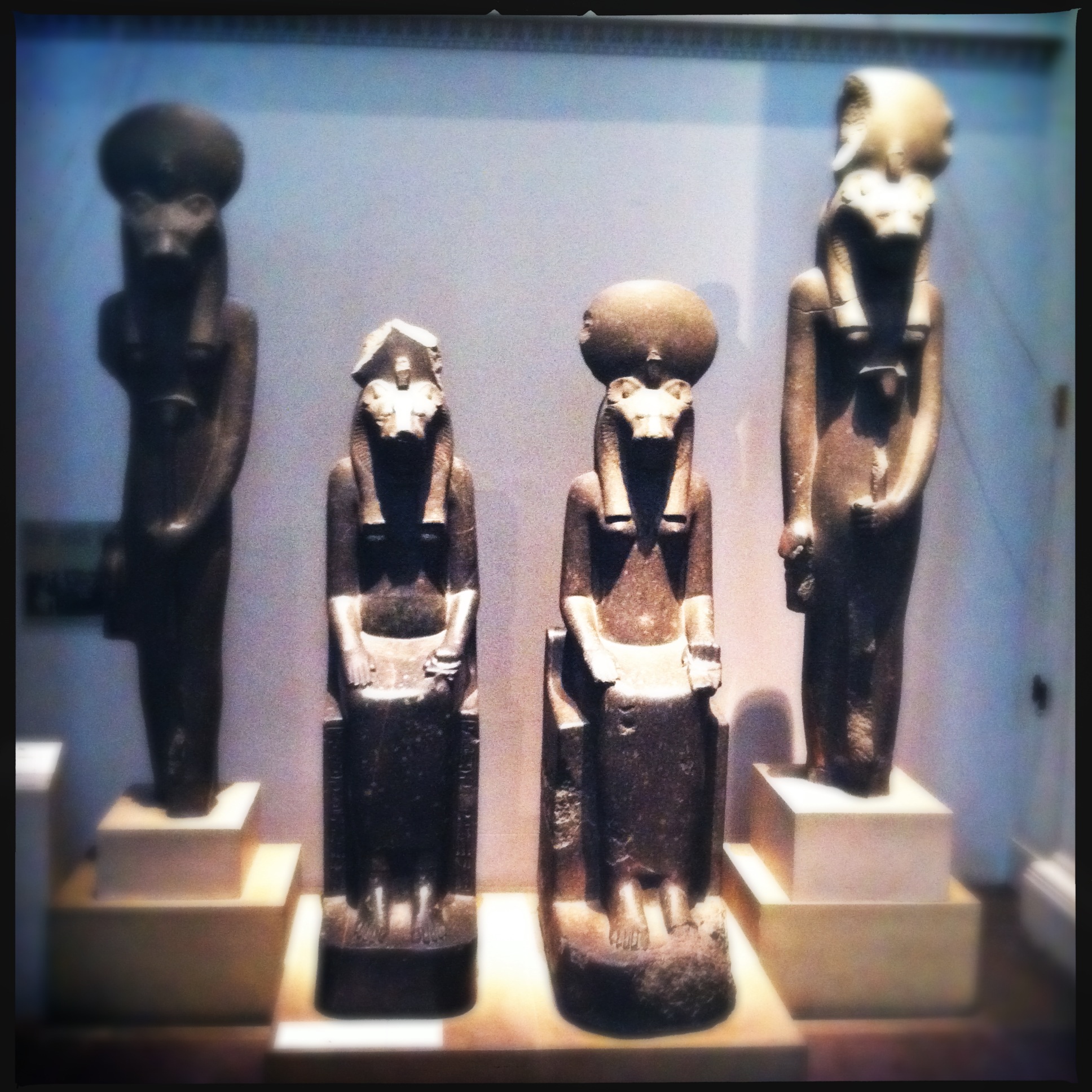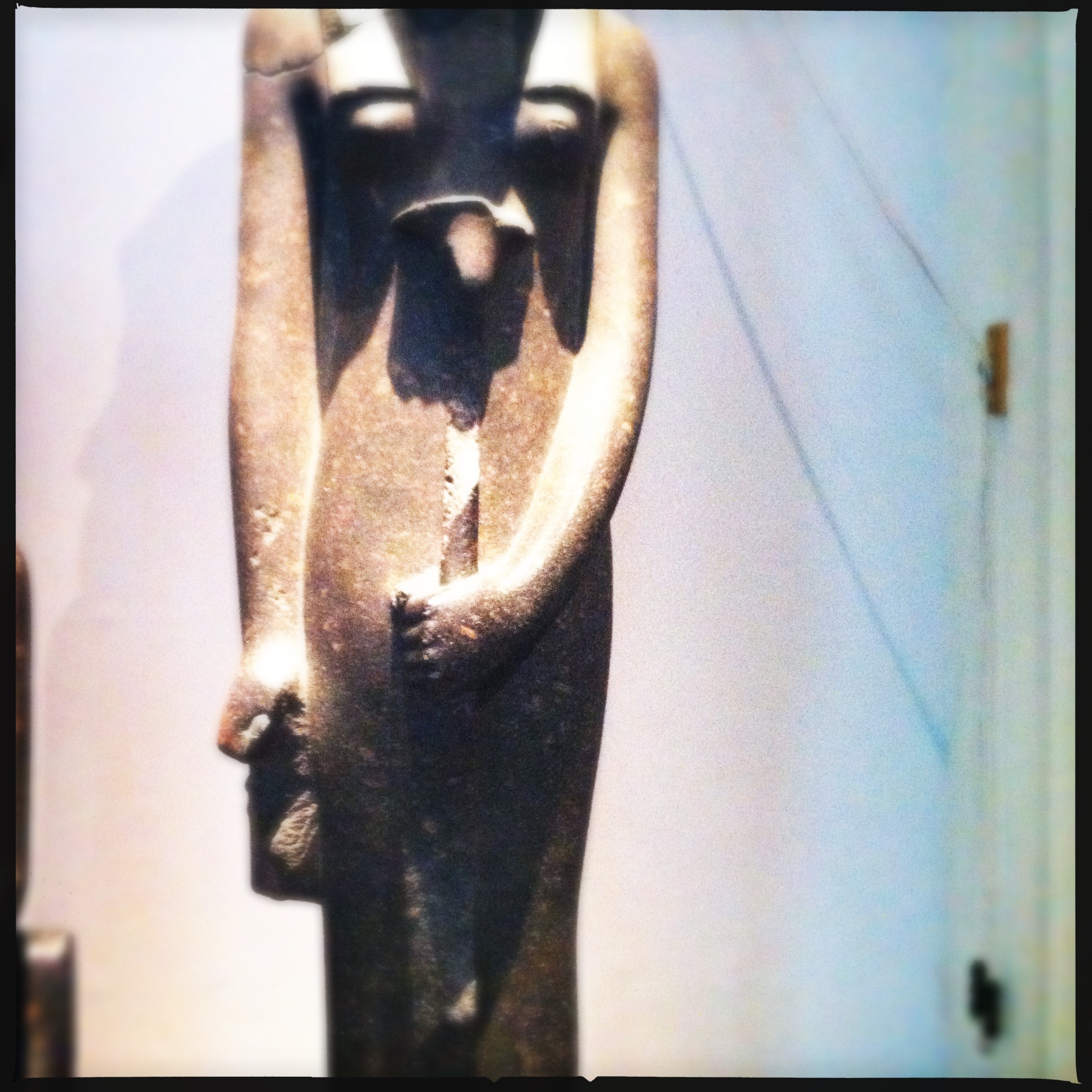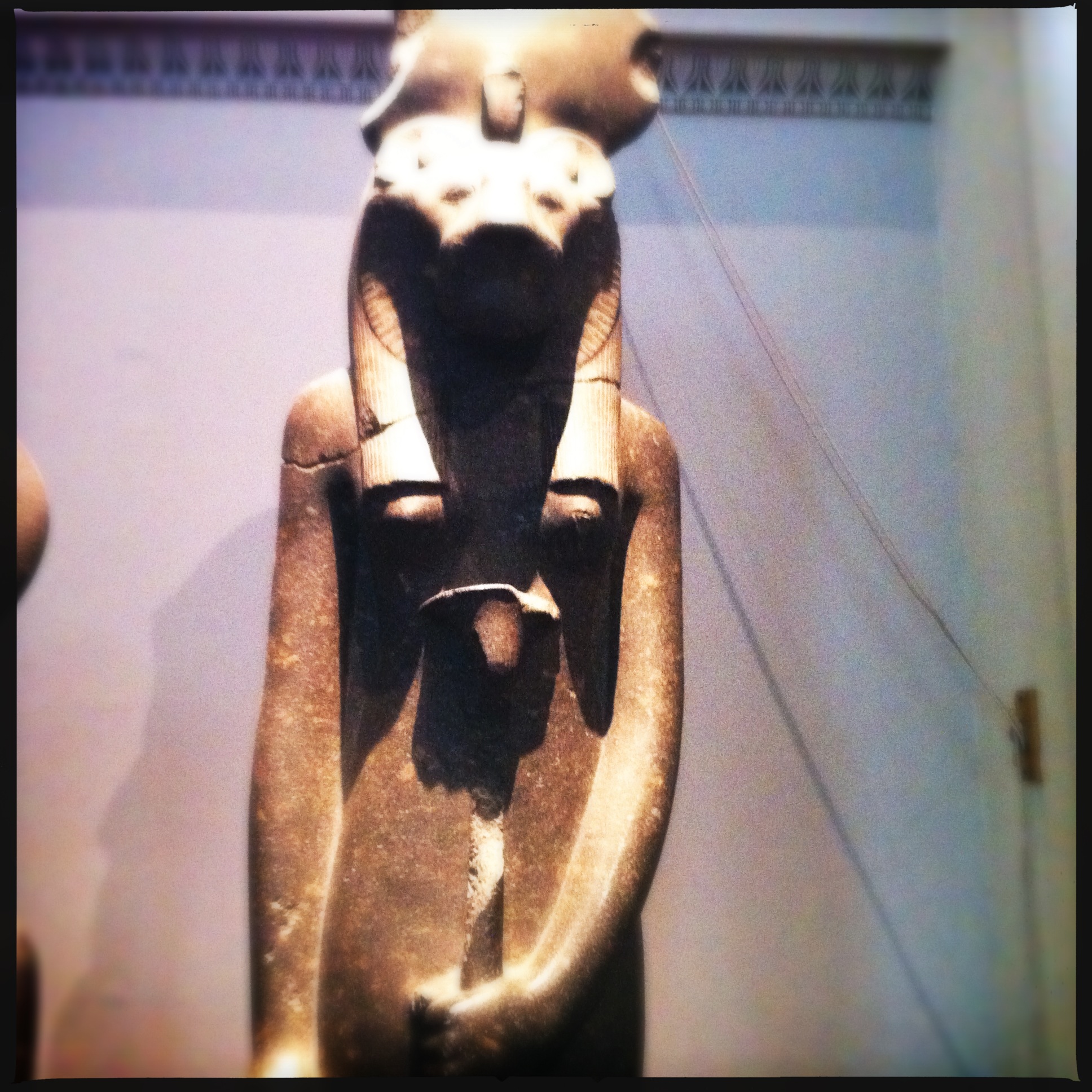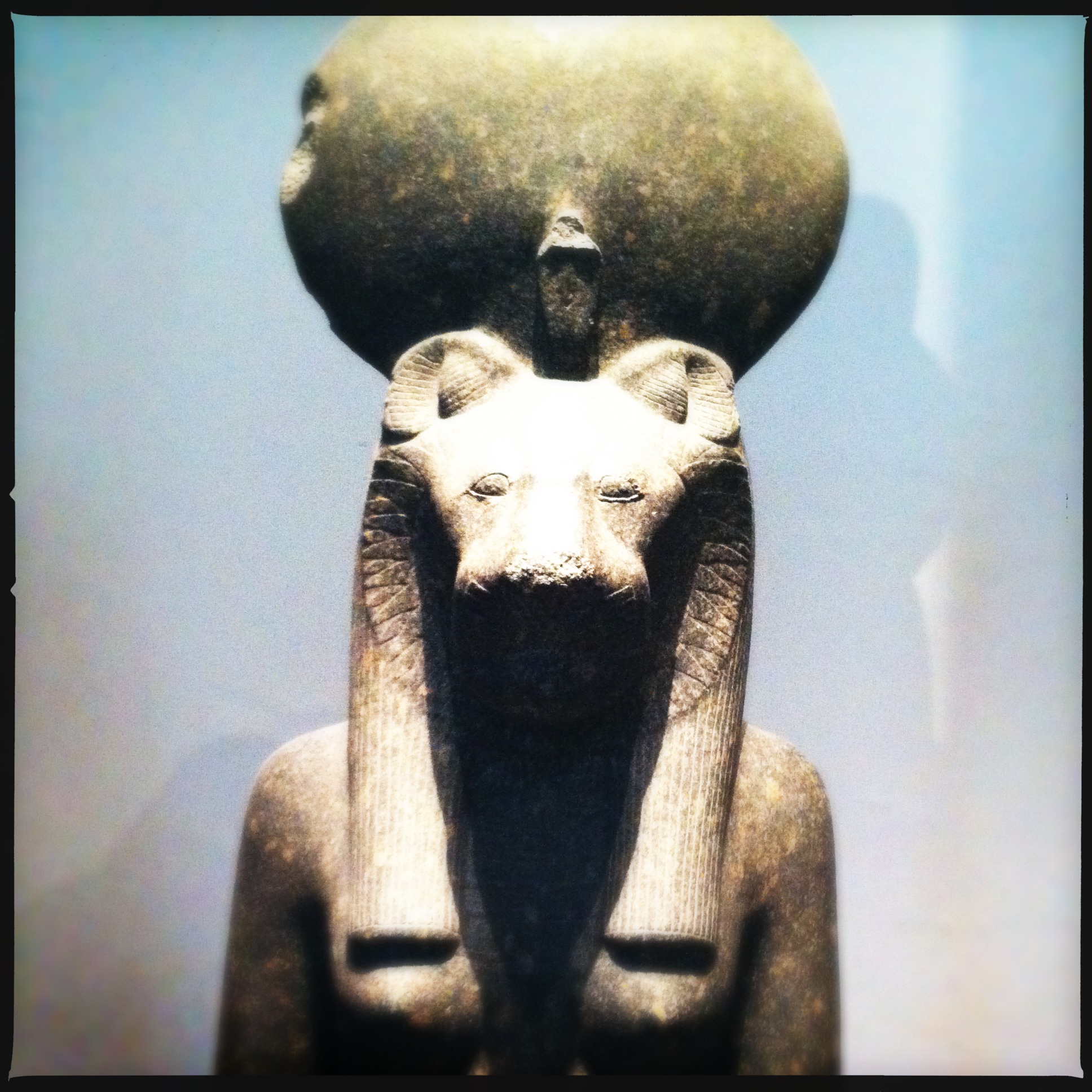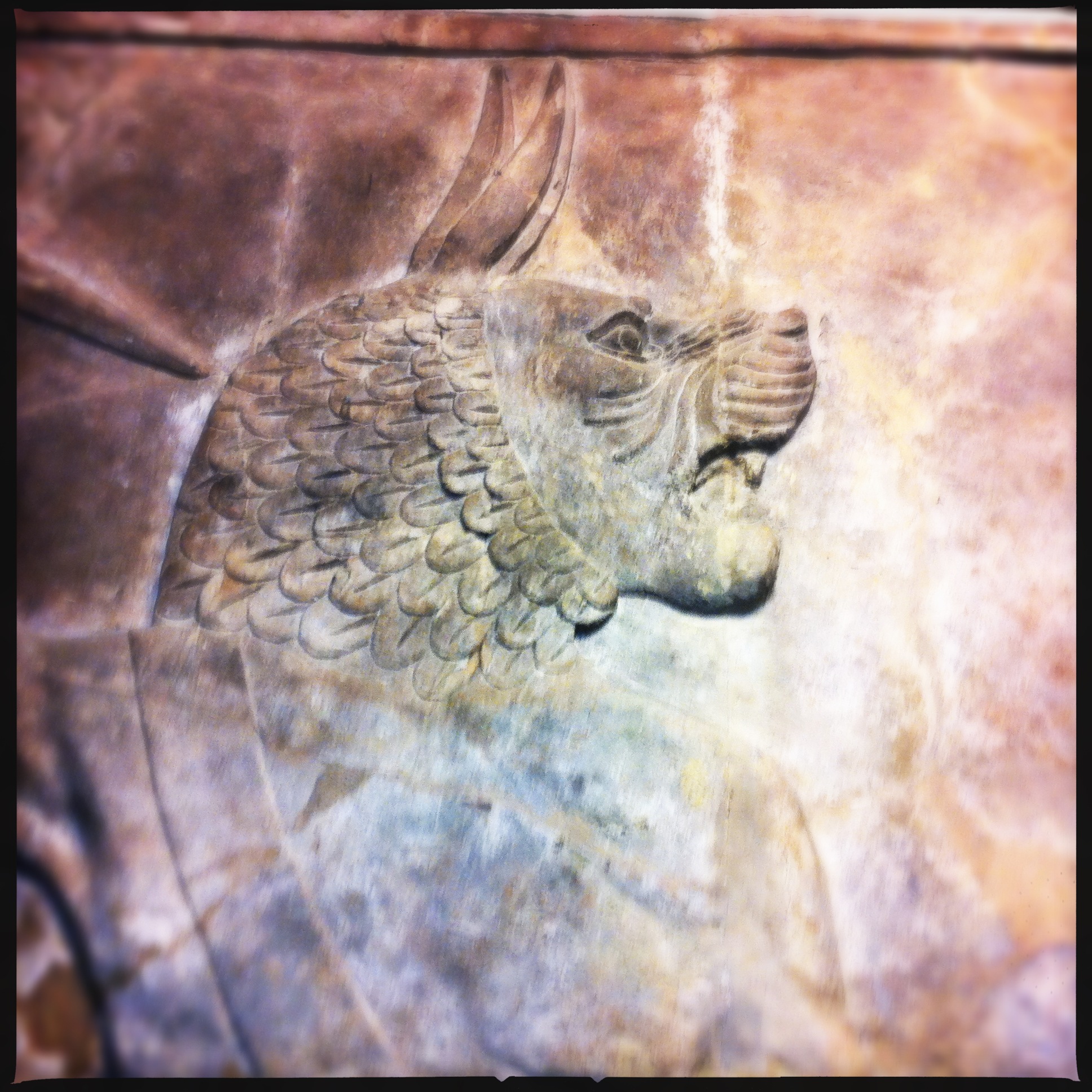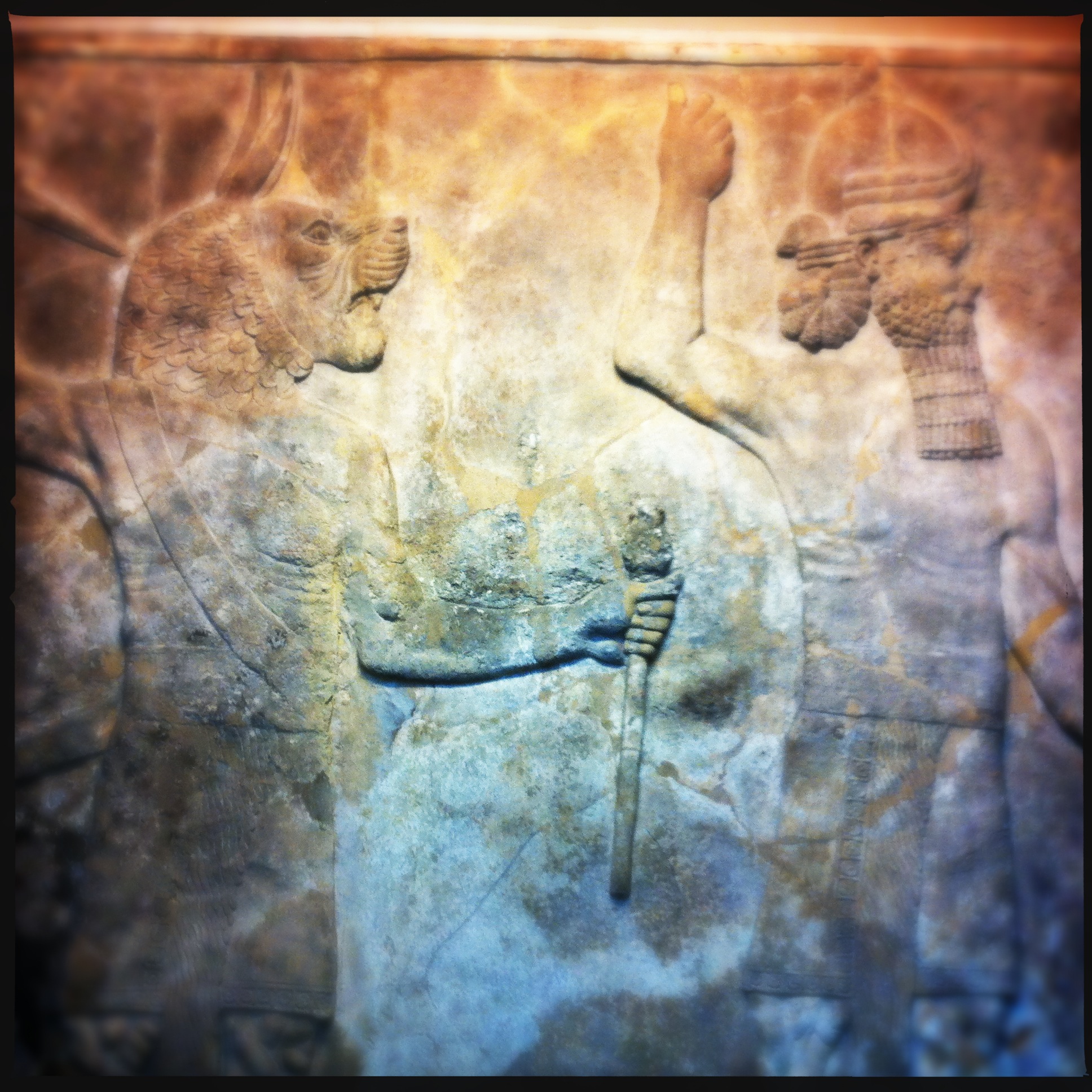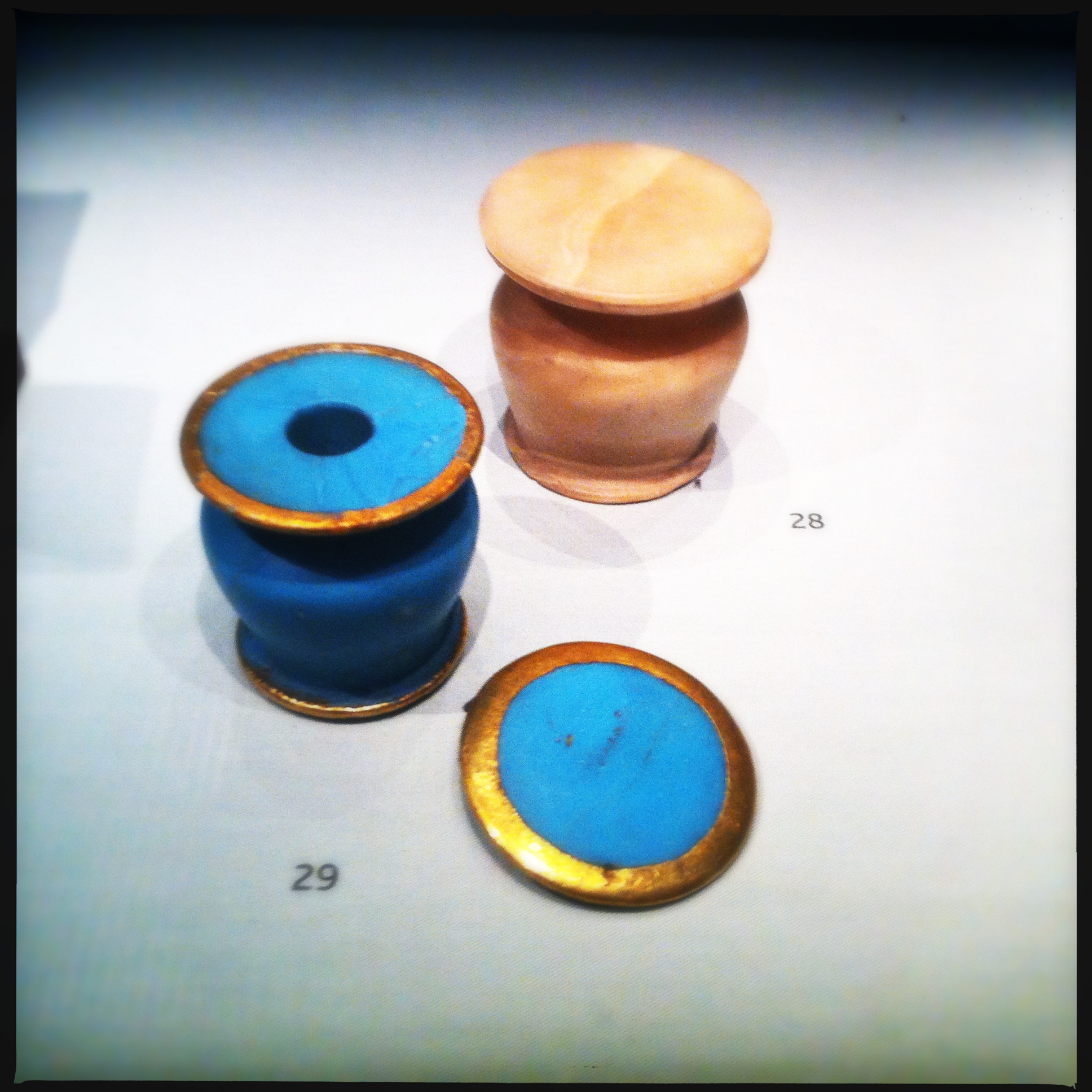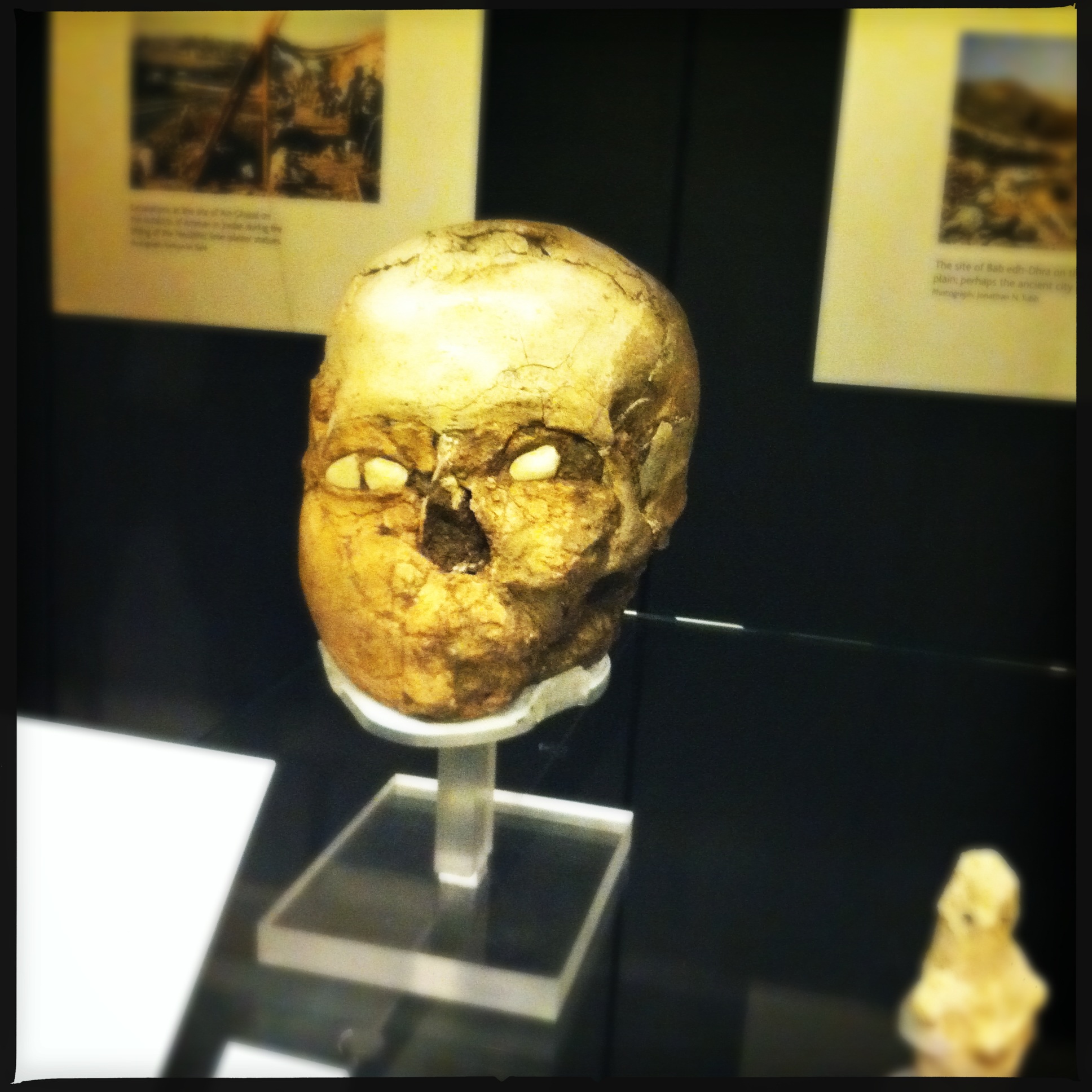Magical Knowledge - A Practice Field Trip (2)
This is the second part of my Practice Field Trip. If you want to find out about the first part and what brought me to the British Museum on this rainy Sunday, click here. Otherwise without further a due we will start exactly where we left it of:
Fixing my eyes on the ground I concentrated on the sphere above my head again. It pointed towards my left and so I followed. Walking I realized I could pull down the shining sphere to cover my entire body, as if I was walking in a large bubble of light and the pull would still work the same way. It felt as if someone was calling and the sphere of light send an echo back from the specific point where the call was coming. So I simply followed the resonance that was transmitted via the light.
A Bridge to the Land
I found myself in front of a smaller glass display. It showed a white, slightly eroded female statue. Before my eyes could catch any of the details, I turned around, found a safe place in a corner and went into vision again.
Standing in front of the statue in vision I didn’t realize any change in its physical substance itself. However, I saw how humans poured water over its white body. As the water touched the stone and flew down towards the ground, it was changed. The statue acted as a mediator of a certain kind of information that seemed to be imprinted into the water through pure contact alone. I looked closer at the water as it ran down the statue. Below the statue was a green field; it seemed I was in a very early agricultural community. The statue wasn’t only a devotional object, it was a practical tool for keeping the lands fertile. Around the foot of the statue the water sunk into the ground and created an astral ripple - like a slowly expanding echo or circles on the surface of a lake that followed an unsung rhythm.
Then the vision changed. Something had fast forwarded in time. The statue was now buried lying in the ground. People still poured out water over the place where they knew it to be sleeping, still quietly working with the land. Yet, they would also gather above the burial point of the statue, sit in groups and eat and drink... What had driven them to change the use of the statue and how much in time we had proceeded, I do not know.
On returning into the busy atmosphere of the Museum, I stepped closer and took a look at the description of the item behind the glass window. It said:
“Limestone female figure. Probably Late Neolithic, 4500-3200 BC, from Karpathos. This figure has some features in common with Cycladic figurines, notably the beaked nose, pointed breasts and pronounced pubic triangle. It may in some sense be a precursor of Cycladic figures, but it is unusual, and the relationship is unclear.”
The strongly emphasized pubic triangle as well as the pointed breasts made perfect sense to me. They were organs of fertility that played a major role in fertilizing the land by touching the water streaming over them.
Unfortunately, I could see the usage of the statue in vision, but I didn’t get any conscious connection to a contact of that time. I would have loved to know how specifically the statue had been created and charged? It seemed her consecration though, wasn’t specific to any particular god or divine-aspect, yet to the life-giving mother earth herself. Thus it was a powerful and very raw magical tool - bridging the divide between the skies - where the water had come from - humans and the chthonic depths of the fertile grounds.
The Eyes of the Goddess
I walked down a long hallway with bright roof windows above. At this point it seemed to become easier to navigate in vision and on the physical realm simultaneously. The boundaries became thinner. I saw the static between the two opposing glass fronts that kept the room in constant charge of tension. Objects were placed opposite each other, that weren’t either meant to be in the same room or divided from each other?
An inner hint made me pause at the end of the hall. Slowly I started to feel the strain on my body and mind. Yet, at the same time I heard the call of the tiny clay figurines in the window in front of me. I knelt in front of them, closed my eyes and returned into vision.
Emerging out of the Void I saw the small figures for what they were: tiny holes between the realms, that would allow beings on the inner realm not to come through fully, but to participate in a communion that took place in the temple. They reminded me of the holes you can find in some wooden walls of ancient synagogs - built for women to look through in an enclosing room to follow the prayers, liturgy and ritual acts in the main temple. Well, just as much you could compare them to astral cinema seats...
Suddenly I saw them in their old environment: a temple dark of night appeared in front of me. The figurines had been placed on small niches high upon the walls, surrounding the entire temple place. There were so many of them, glowing in the dark like candles. They formed a circle made of living eyes around the inner shrine - for the servants of the goddess to participate in the rites performed at night.
Here is what the text below the window had to say:
“Mycenaean terracotta female figures wearing a long skirt and a flat polos (head-dress). 1300-1250 BC, found at Athens and Melos”
Fair enough, I thought. You couldn’t argue with that description. And who would blame archeologists for being challenged in understanding their proper ritual use? There are more things for the inner eye to discover, than there are things to perceive in a lifetime for our physical eyes.
The Statues of Sekhmet
I knew there was something waiting for me upstairs. So I wandered back into the main hall of Egyptian artifacts I had come from, looking for a way to the first floor. While passing through the huge grey and black stone figures, a voice became very clear. I closed my eyes, tourists passing all around me, and tried to locate it. When I had a clear sense of direction, I started walking again. Only this time, I knew it was a call of the goddess Sekhmet before I had even seen her.
I found her bound into four black statues to the left of the wall. People formed a half-circle in front of her and took photos, some of them posing in front of her for friends to take the pictures. I sat down on a bench nearby and went into vision. Darkness embraced me like the wings of a black bird. Then I stepped out of it into the large hall. Immediately I was pushed back: roaring wild and ferociously a huge lion head shot at me. Someone was absolutely not happy...! I did what I had learned from Josephine’s books: I bowed deeply and said I don’t care about what other people might be doing, but I would honor her with a pure and devoted heart. I also asked her to accept my honors and praise.
Sekhmet visibly calmed down. I used the pause to realize in which of the four statues her consciousness had been best conserved. I quickly realized which one it was; as three of them were almost empty and only carried small amount of divine energy anymore. I stood in front of the one that encapsulated her being still and opened a connection between my heart chakra and herself. Immediately energy started pouring out of me and into the being of the goddess. She grew taller and taller. Her head disappeared above the ceiling and her legs into the ground of the building. Before me I saw her lioness uterus, growing stronger and bigger through the charge streaming out of my being... Then suddenly, once it had charged sufficient energy, it released all of what it contained into the earth. A huge injection of power shot into the ground. It felt as if a pulse had been re-initiated and Sekhmet needed more energy to keep it going. Yet, I realized that my energies grew weaker and weaker, even though I had opened all of my spine, so that the surrounding energy present in the room could simply flow through me and into her. Wary that this field trip exercise might end in a severe physical aftermath, I stopped the flow of energy between us. Instead, I turned around and spoke to all the angels of the human beings present in the room.
I asked them to follow this inner call and pay homage to the ancient goddess Sekhmet. Without hesitation the astral shapes of many visitors started to bow... It seemed to work, but not to be very sustainable?
So I asked for four servants of Sekhmet to appear. Out of nowhere four dark-skinned men in white robes stood became visible. I asked them to ensure a balanced flow of giving and taking between the visitors and Sekhmet. They approached the astral shapes of the visitors next to them and made them kneel and bow down in front of the goddess. After a short while they allowed them to get up again and continue on their path. I asked the four servants to stay for as long as possible and to continue their devotional work... Finally, I turned back to the statues. Out of three of them I cupped Sekhmet’s distorted remains into my hands and merged it with her being that was still most intact.
That day I did two more jobs on the first floor. Then I walked out of the museum, legs shaking, feeling as exhausted as if I had taken a very long run and a maths exam at the same time...
What it taught me though above all were two things:
- Josephine has shared the most powerful approach to magic I know of in her Magical Knowledge books. Their content can be practiced anywhere and anytime. In a period where magic is focussed on long rituals and techniques to induce gnosis (e.g. Grimoires) they are an act of rebellion. They are heretically different and dig deep into a much more ancient approach to seeing and working with the spiritual world. It might be the most important gift to practitioners in the West since the French occult revival in the 19th century.
- Second, I learned that archeology and historic preservation are so much more than we think of it. In equal measures they help us to learn and to destroy our past. By digging up artifacts that are still intrinsically connected to our land, that are still actively working and weaving the patters of humans, the divine and the chthonic spheres into each other, a lot of this subtle work gets interrupted and destroyed. If the earth had a beating heart, we would probably dig deep until we found it, cut it out and placed it behind walls of glass - not realizing that each truly magical artifact holds as much living consciousness as it holds stories about our past.
For me the key to resolve this dilemma is very simple. Just like all good things. It lies in returning to a worldview that is not based on science but on genuine dialogue. I have this naive hope it could become the journey of an entire generation?






